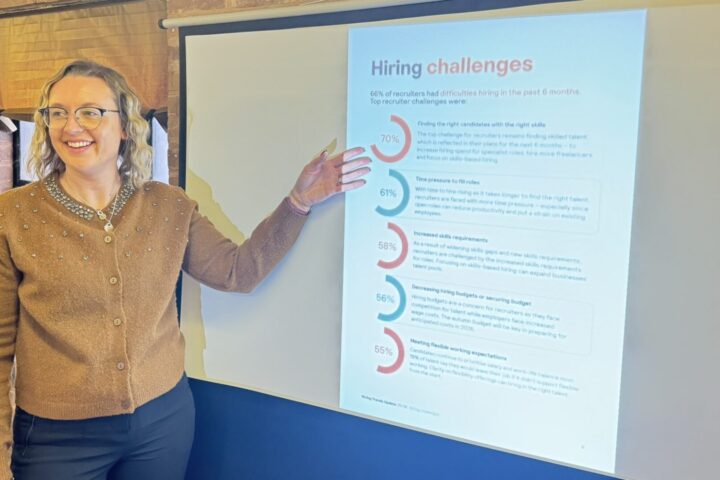The shift to ‘skills-first’ hiring remains incomplete despite widespread endorsement across the HR and recruitment sector, according to research from Robert Walters Outsourcing.
The firm’s report, The Robert Walters TA Evolution 2026: An essential guide for Talent Acquisition leaders, warns that while the approach is seen as the future of recruitment, many organisations continue to rely heavily on traditional experience-based hiring.
Drawing on insights from 15 senior talent acquisition (TA) leaders across global industries and a survey of 250 professionals, the report identified skills-first hiring, artificial intelligence (AI) adoption, and blended workforce integration as key themes shaping the profession heading into 2026.
More than half (52%) of TA leaders cited skills gaps and shortages as a key challenge, while one in five (20%) said the move to skills-based hiring represents the most significant change in the TA landscape for the year ahead.
However, progress remained limited, with leaders highlighting resistance from hiring managers, outdated job structures, and limited integration of skills data as barriers to adoption.
David Barr, CEO – outsourcing at Robert Walters, said: “Many organisations are making important strides toward skills-first hiring, but it remains a complex journey.
“And for many, the promise of broader, more agile talent pipelines is being held back by old habits. TA leaders are caught between vision and execution.
“They know focusing on capability over credentials can unlock top talent, improve diversity and strengthen business responsiveness, but delivering it requires systemic change.
“2026 will be the test of whether skills-first can move from pilot to practice or risk becoming another HR buzzword.”
The study also highlighted technology’s growing role in recruitment.
Nearly 70% of TA leaders said AI and automation will be the biggest disruptors to the profession going into 2026.
Almost half (47%) reported that they are training teams to use AI tools, while an equal share said they are promoting experimentation to support responsible innovation.
The rise of non-permanent work continued to reshape the workforce, with project-based and contingent roles now accounting for around 16% of the global labour market.
42% of TA leaders said their organisations use a mix of permanent and contract workers, and two in five are developing internal talent marketplaces to improve agility.
However, 61% said integrating non-permanent staff into company culture remains a challenge.
Barr said: “Blended workforce design has become a defining feature of high-performing businesses. Building capability, speed and resilience into an organisation increasingly depends on how well permanent and non-permanent talent are managed together.
“The most forward-thinking companies now view their entire workforce as one ecosystem instead of treating non-permanent talent as a cost gap.
“They recognise that contractors, consultants and permanent employees each play a critical role in delivery and growth. This shift requires new levels of visibility, planning and leadership accountability, but the payoff is a more agile business fit for the future.”
The report also found that TA leaders expect stronger collaboration between HR, Learning & Development and Talent functions next year.
Half anticipate closer alignment across people functions, while 40% predict a move toward unified “total talent” strategies linking external recruitment with internal mobility and capability development.
As the function evolves, TA professionals are under increasing pressure to demonstrate measurable business value.
41% said building stronger relationships with business leaders is critical, while 32% are aligning TA strategy directly with commercial goals.
More than a quarter (27%) now use hiring data to demonstrate impact through productivity, retention and revenue.
Barr added: “2026 will separate the TA functions that can demonstrate measurable business impact from those still focused on process metrics.
“Leaders who combine technology with human insight, data with storytelling, and agility with governance will redefine the value of Talent Acquisition going forward.”
















